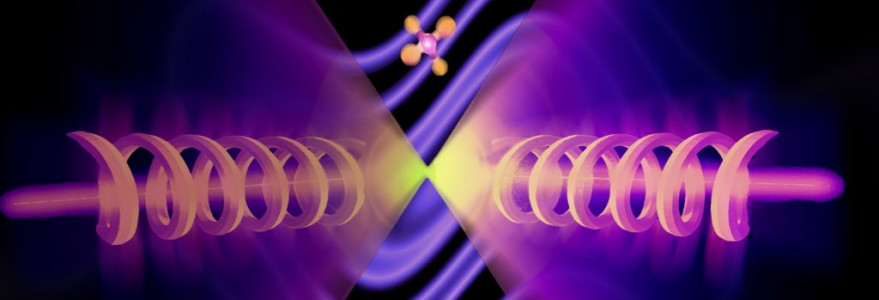A team of scientists at the University of Warsaw’s Faculty of Physics made a discovery that has implications for the study of light-matter interactions and represents a step towards the observation of a peculiar phenomenon known as a quantum backflow. The research results have been published in Optica.
Researchers at the University of Warsaw’s Faculty of Physics have superposed two light beams twisted in the clockwise direction to create anti-clockwise twists in the dark regions of the resultant superposition. The results of the research have been published in the Optica journal.
“In classical mechanics, an object has a known position. Meanwhile, in quantum mechanics and optics, an object can be in the so-called superposition, which means that a given particle can be in two or more positions at the same time,” Dr Radek Łapkiewicz, the Head of the Quantum Imaging Laboratory at the Faculty of Physics of the University of Warsaw, explains.
Quantum particles may have a probability to move backwards or spin in the opposite direction during some periods of time. Physicists call such a phenomenon backflow.
Backflow in optics
Backflow in quantum systems has not been experimentally observed so far. Instead, it has been successfully achieved in classical optics. Theoretical research works explored the relation between backflow in quantum mechanics and the anomalous behaviour of optical waves in local scales. For example, an optical backflow was observed by synthesising a complex wavefront.
Researchers from Dr Łapkiewicz’s team have demonstrated this phenomenon in one dimension using the simple interference of two beams of light. The backflow effect in two dimensions has been presented in the publication “Azimuthal backflow in light carrying orbital angular momentum”.
“In our study, we have superposed two beams of light twisted in a clockwise direction and locally observed counterclockwise twists,” Dr Łapkiewicz explains.
To observe the phenomenon, the researchers used a Shack-Hartman wavefront sensor. The system, which consists of a microlens array placed in front of a CMOS (complementary metal-oxide semiconductor) sensor, provides high sensitivity for two dimensional spatial measurements.
“We investigated the superposition of two beams carrying only negative orbital angular momentum and observed, in the dark region of the interference pattern, positive local orbital angular momentum. This is the azimuthal backflow,” Bernard Gorzkowski, a doctoral candidate in the Quantum Imaging Laboratory at the Faculty of Physics, says.
Superoscillation
As the scientists emphasise, their current demonstration can be interpreted as superoscillations in phase. Superoscillation is a phenomenon that refers to situations where the local oscillation of a superposition is faster than its fastest Fourier component.



